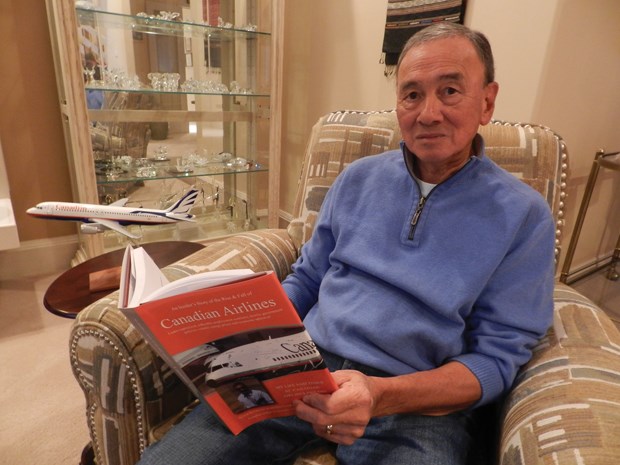The ups and downs of Canada’s airline industry experienced through the turbulent 1990s is not likely to be repeated.
So says Sid Fattedad, a Richmond resident and former airline executive who had a front seat during the sunset days of Canadian Airlines International and recently published a book — An Insider’s Story on the Rise and Fall of Canadian Airlines — on the era that eventually left Canadian air travelers with less choice, higher ticket prices and a lack of a pioneering spirit in the skies.
“I don’t think the government would allow it to happen today,” said Fattedad, alluding to the demise of Canadian, a western-based airline that brought together numerous carriers including Wardair, CP Air, Pacific Western Airlines, and Nordair under one name in 1987.
Amid rising operating costs, changing markets, shifting airline partner allegiances, and a battle for routes, Canadian was eventually purchased and merged under one flag — Air Canada — by the turn of the century.
“I’m quite sure it shouldn’t have played out that way because what’s happened since then is the development of a true duopoly in the country,” said Fattedad, who came out of retirement in 1992 after serving as Canadian’s western region vice-president to form an employee-led buyout of the airline in hopes of leading it away from a merger with Air Canada.
Fattedad was named chairman of the Council of Canadian Airlines’ Employees which invested around $250 million in the carrier. But it proved not to be enough in the long run.
“Those were the days when you had company spirit,” Fattedad said when asked why Canadian’s workforce would go to such lengths to try and preserve their airline. “These days the air travel game is much more of a commodity business.”
Asked if there was an eastern bias that contributed to Canadian’s struggles and employee opposition to a merger with Air Canada, Fattedad laughed and said, “Well, Air Canada was always the government’s baby. The government set them loose from being a crown corporation to being a publicly owned airline when they privatized Air Canada.”
That meant the airline was debt free, plus it enjoyed generous lines of credit from the banks.
“They (federal government) put Air Canada on the map, and, through the years and wars with Canadian and economic downturns, they had to go through two bankruptcies,” Fattedad said.
That left the skies above Canada controlled by one, major international air carrier, until WestJet grew to become a competitor. But even with that, minimal choice in the air travel marketplace is not good for consumers today, Fattedad said.
“This is the only country in the world where 80 per cent of the traffic is concentrated in two airlines,” he said, adding he feels there’s room for more competition.
As for why he decided to chronicle those changes he experienced in the industry, Fattedad said it was an important time that needed to have the record set straight.
“It was also something I needed to get off my chest, you know,” he said. “It’s a cathartic experience for me because I saw the whole thing develop and progress from the early days of the initial merger of Eastern Provincial Airways by CP Air, to the final merger with Wardair. There were so many different players and angles and characters. I lived through it all. And I thought I’d try and share it with people before it’s too late, because we’re all getting too old.”
An Insider’s Story on the Rise and Fall of Canadian Airlines is available at warfleetpress2.wordpress.com.



